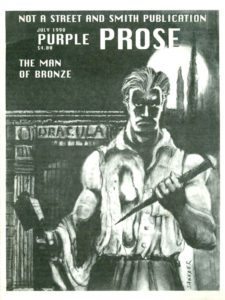 A nice, though relatively short-lived pulp fanzine was Purple Prose put out by Mike Chomko, who runs a business selling pulp magazines and reprints.
A nice, though relatively short-lived pulp fanzine was Purple Prose put out by Mike Chomko, who runs a business selling pulp magazines and reprints.
Purple Prose ran 17 issues from 1995 to 2003. Mike started the fanzine when he was a stay-at-home dad. Then he went back to school to become a nurse and no longer had the time to run the fanzine, though he wanted to put out at least one issue a year. Sadly, this didn’t happen.
The fanzine is 8.5×11. The first four issues were issued as part of the Pulp Era Amateur Press Society, or PEAPS (hopefully a topic for a future posting). These were typed up, and later in 2017 these 4 were reprinted as a single publication. It then became a fanzine offered to subscribers with #5 in addition to being part of PEAPS (though I suspect at some point it stopped appearing there).
At first it was photocopied and stapled along the left edge. With issue #9 it when to photo-offset printing on heavier paper and was saddle-stitched. This helped with the quality of the artwork and photographs.
I have a complete set of the fanzine, and these are some of the highlights:
#1 (July 1995) Written as an introduction to the members of PEAPS, we get a personal note on Mike’s discovery of the Doc reprints. We also get commentary on various items.
#2 (October 1995) Contains a report on Pulpcon 24. The rest is taken up with commentary on the other PEAPS offerings.
#3 (January 1996) Provides further biographical information, and commentary on the PEAPS mailing #33.
#4 (April 1996) Has a report on Pulpcon B, a report by another attending (offered anonymously), and commentary on PEAPS mailing #34.
#5 (July 1996) For some time we’ve seen articles and whole books speaking of the pulps from the viewpoint of authors and editors. But what about readers? In this issue, we get a long article by pulp collector Richard Minter, who was purchasing pulp magazines straight from the stands starting in the 1930s with Wild West Weekly. But it was Weird Tales that really got him into collecting, as once he started getting the magazine, he built up a collection of the previous issues and had his brother buying the issues for him while he was in the Navy during WWII. And it’s his reading and enjoyment of Weird Tales that is the main focus of the article.
We also get a couple of lists like Minter’s “25 Golden Weird Tales” and “25 Silver Weird Tales.” Chomko provides a couple of other items, including a list of all American science fiction and fantasy pulps, and an article on the later Captain Future novelettes.
#6 (1996) The focus of this issue is a trio of articles on pulp hero, The Spider. Following an intro by Chomko, we get articles by Michael Avallone, Wooda “Nick” Carr, and Chomko. Also included are Avallone’s and Carr’s lists of the top 10 Spiders stories, which appeared in previous works.
#7 (1997) gives us a long three-part article that looks at Operator #5 as well as pulp fan and historian Wooda “Nick” Carr, who wrote the only book-length work on the character. As noted, the article gives information on Carr, his early discovery and love of Operator #5, as well as the character and the times he was appearing.
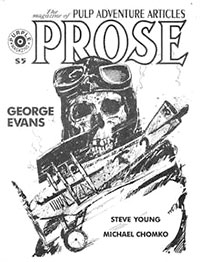 #8 (November 1997) The focus of this issue is pulp fan Shawn Danowski, who was fighting leukemia. We have tributes from Steve Mitchell, Tom Johnson, and Chuck Juzek. We also get an article by Shawn himself covering his introduction to the world of pulp. Rounding out the issue is the first of a two-part article, “A Little Lookin’ Out for the Other Fella” by Chomko, which looks at the Great Depression and its affect on pulp heroes and their readers.
#8 (November 1997) The focus of this issue is pulp fan Shawn Danowski, who was fighting leukemia. We have tributes from Steve Mitchell, Tom Johnson, and Chuck Juzek. We also get an article by Shawn himself covering his introduction to the world of pulp. Rounding out the issue is the first of a two-part article, “A Little Lookin’ Out for the Other Fella” by Chomko, which looks at the Great Depression and its affect on pulp heroes and their readers.
#9 (July 1998) Herman Landon was a prolific contributor to the pulps from the teens through the ’30s in Detective Story Magazine, Detective Fiction Weekly, and others. He created a few serial characters like Godfrey Usher, a psychic detective; The Gray Phantom, a criminal mastermind who later reforms; and the Picaroon, a thief who steals for excitement. Researcher Richard Bleiler gives an overview of another character who may have been a forerunner of Doc Savage: Kingdon Cole. The rest of the issue is devoted to the long second part of “A Little Lookin’ Out for the Other Fella” by Chomko.
#10 (Nov 1998) The focus on this issue is the long-running Adventure. Bleiler looks at the “golden age” of Adventure under editor Arthur Sullivant Hoffman. We get two articles on author Barry Scobee, and another looks at the heroes that appeared in Adventure under Hoffman.
The back cover and inside back cover reprint (sadly in black and white) 12 covers from Adventure. This reprinting of 12 pulp covers will continue with the remaining issues.
#11 (June 1999) This time focuses on the weird menace artwork of Popular Publications. We get an article on cover artist John Newton Howitt, who is also the focus of the back cover art gallery. Next is an article on interior artist Paul Orban (in a revised and expanded article from Echoes).
#12 (Dec 1999) focuses on the pulp western. In a reprint from True West magazine in 1967, we get an article by Walt Coburn on his career as a pulp western author. There is a reprint of a biography of Coburn. Western artist Gayle Hoskins did a series of cover art for Western Story Magazine called “A Cowboy’s Day” that ran weekly for six months. We get an article on this and three pages of 27 covers as the back-cover art gallery.
#13 (Nov 2000) The “Dime” magazines of Popular Publications are the focus this time. Dime Mystery Magazine before the weird menace period is the focus of a long article. G.T. Fleming-Robert‘s “other” magician character, Jeffrey Wren, who appeared for seven stories in Dime Detective, is the focus of the other article. I wonder if Altus Press will reprint this character? And, of course, the back cover art gallery gives us covers from various “Dime” magazines.
#14 (July 2001) focuses on detective fiction, with Dashiell Hammett‘s Continental Op on the cover. We first get an article on A.J. Raffles, the “amateur cracksman” (cricketer) and gentleman thief created by E.W. Hornung in 1898, and written by several others, as well as an inspiration for similar characters. Next is an article about Hammett, and an article by Will Murray on Lester Dent‘s short-lived Oscar Sail. And finally an article on the Candid Camera Kid. The back cover art gallery focuses on hard-boiled pulp covers, mainly from Black Mask.
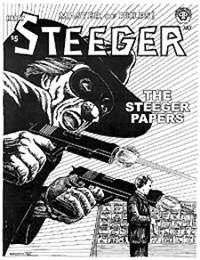 #15 (Feb 2002) Aviation pulps are our focus this time. George Evans, comicbook and strip artist, was a pulp fan growing up, and also wrote a series of reminiscence of this. Chomko edited many of these together, focusing on the aviation pulps. Fiction House’s Wings pulp is the focus of the other article in this issue, as well as the back cover art gallery.
#15 (Feb 2002) Aviation pulps are our focus this time. George Evans, comicbook and strip artist, was a pulp fan growing up, and also wrote a series of reminiscence of this. Chomko edited many of these together, focusing on the aviation pulps. Fiction House’s Wings pulp is the focus of the other article in this issue, as well as the back cover art gallery.
#16 (July 2002) “The Steeger Papers” takes up pretty much the whole issue. Harry Steeger was the founder and publisher of Popular Publications. Around 1972 he started work on what was to be a definitive history of the pulps, which never happened. Mike Chomko edited and footnoted the work and published it here. This is a work that deserves to be preserved. Pulp historian Don Hutchison provides an afterword on Steeger. The back-cover art gallery is a comparison between the cover styles of Street & Smith and Popular.
#17 (July 2003) In a followup to the prior issue, Will Murray provides an article on pulp editor Roger Terrill who oversaw the creation of “weird menace” there. Another article looks at the “true confession” pulps. Al Tonik provides an interview with the wife of G.T. Fleming-Rogers (creator of Captain Zero, Green Ghost, Diamondstone and other works). The back cover gallery compares Steeger’s pulp with Terrill’s.
It is possible to find many of these issues. Interestingly, several issues were reprinted, sometimes twice! Mike Chomko still has several available (he is a pulp reprint dealer) as do other dealers. These articles deserve to be read widely. Get them while they are readily available. Purple Prose is a different fanzine as it’s much more the personal work of Chomko, as he contributes a lot to each issue, and isn’t limited to being just the editor and publisher.

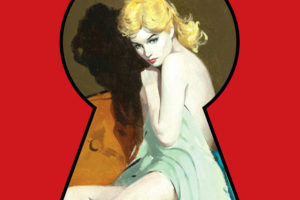
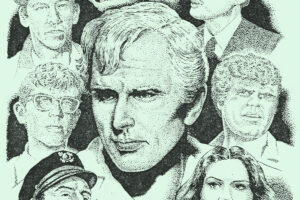
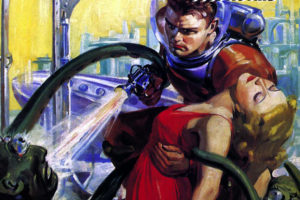
Mike Chomko wrote his “Purple Prose” column for Pulpdom #2,3,4,5,6 & 7 back in 1997. It seems to me that information should have been included. -Caz
Pulpdom #2 (March 1997)
Purple Prose: Hickman and the Pulp Era (1 page)
Pulpdom #3 (April 1997)
PP2: I-Beams, Back Alleys, and the Man of Bronze (2 page)
Pulpdom #4 (May 1997)
PP3 – Family Life with Operator #5 (1.5 pages) *
Pulpdom #5 (July 1997)
PP4 – Sam Moskowitz: Explorer of the Infinite (2 pages)
Pulpdom #6 (Sept 1997)
The Pulp Wire 5 – Pulpcon 26 (news) (1.75 pages)
Pulpdom #7 (October 1997)
The Pulp Wire 6 – The Bronze Shadow of Fred Cook (1 page)
* associated with Purple Prose #7 (1997) In MB’s article on Mike Chomko
“Pulpdom” is still available in electronic form from its publisher at http://www.pulpdom.com. You can get the complete set of back issues, as well as copies of the new version known as “Pulpdom Online”. A long running pulp fanzine more devoted to the early years of pulp fiction.
For a couple years, beginning around 1998-99, I noodled around with the idea of publishing another fanzine (my first since 1969), inspired in large part by what I considered to be the two best pulp zines around: PULP VAULT and PURPLE PROSE. Both ran long-form, research-intensive articles on pulp history. Mike told me in 2002 that he didn’t think he’d be able to maintain his schedule much longer, and by that time Doug had published his last PULP VAULT. So I saw an opportunity to fill the void with BLOOD ‘N’ THUNDER, which was successful right out of the gate. Had Mike continued to publish PURPLE PROSE regularly, I’m not sure I’d have made the attempt. But his superb theme issues of the 1999-2002 period set the mark I tried to reach.
Interesting.
Have always been sadden when great fanzines come to an end, like Pulp Vault, Purple Prose, Pulp Collector, etc. Seldom do new fanzines come in to replace them or do you hear of new ones being inspired by their demise.
I would have at least liked to have seen Pulp Vault and PP continue with annual issues or the like. But certainly the long running BnT, now in book form (up to #4 now) have been a worthy successor to these.